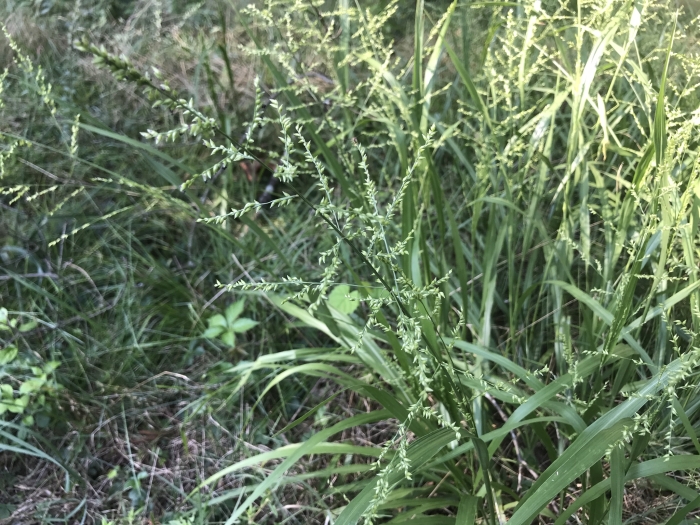Beaked Panic Grass
(Coleataenia anceps)
Beaked Panic Grass (Coleataenia anceps)
/
/

Michael Ellis
CC BY 4.0
Image By:
Michael Ellis
Recorded By:
Copyright:
CC BY 4.0
Copyright Notice:
Photo by: Michael Ellis | License Type: CC BY 4.0 | License URL: http://creativecommons.org/licenses/by/4.0/ | Rights Holder: Michael Ellis | Publisher: iNaturalist | Date Created: 2020-08-08T21:13:40Z |



















































Estimated Native Range
Summary
Coleataenia anceps, commonly known as Beaked Panic Grass, is a deciduous perennial grass native to a variety of habitats including open woodlands, grasslands, and riparian areas in the Southeastern United States. It typically grows to a height of 3-4 feet (0.9-1.2 meters) and a width of up to 3 feet (0.9 meters). This grass features narrow, lance-shaped leaves and produces a distinctive seed head with a beaked appearance, which gives the plant its common name. The inflorescences appear in late summer to early fall and are not particularly showy, but they add texture to the landscape.
Beaked Panic Grass is valued for its adaptability and use in naturalistic plantings, restoration projects, and as a component of wildlife-friendly gardens. It provides cover and food for birds and other wildlife. This grass is relatively low-maintenance, tolerating a range of soil conditions, though it prefers moist, well-drained soils. It thrives in full sun but can also handle part shade. While generally disease-free, it can occasionally suffer from rust or fungal leaf spots. Beaked Panic Grass is not known for aggressive roots or significant pest problems. It is not typically invasive when grown outside its native range, but gardeners should always monitor and manage their plantings to prevent unwanted spread.CC BY-SA 4.0
Beaked Panic Grass is valued for its adaptability and use in naturalistic plantings, restoration projects, and as a component of wildlife-friendly gardens. It provides cover and food for birds and other wildlife. This grass is relatively low-maintenance, tolerating a range of soil conditions, though it prefers moist, well-drained soils. It thrives in full sun but can also handle part shade. While generally disease-free, it can occasionally suffer from rust or fungal leaf spots. Beaked Panic Grass is not known for aggressive roots or significant pest problems. It is not typically invasive when grown outside its native range, but gardeners should always monitor and manage their plantings to prevent unwanted spread.CC BY-SA 4.0
Plant Description
- Plant Type: Grass
- Height: 2-4 feet
- Width: 2-3 feet
- Growth Rate: Moderate
- Flower Color: N/A
- Flowering Season: Summer
- Leaf Retention: Deciduous
Growth Requirements
- Sun: Full Sun
- Water: Medium, High
- Drainage: Fast
Common Uses
Bird Garden, Erosion Control, Low Maintenance
Natural Habitat
native to a variety of habitats including open woodlands, grasslands, and riparian areas in the Southeastern United States
Other Names
Common Names: Beaked Panicum
Scientific Names: , Coleataenia anceps, Panicum anceps, Coleataenia anceps subsp. rhizomata, Panicum rhizomatum, Panicum anceps var. rhizomatum, Panicum anceps subsp. rhizomatum, Panicum pensylvanicum, Panicum rostratum, Agrostis nutans
GBIF Accepted Name: Coleataenia anceps (Michx.) Soreng